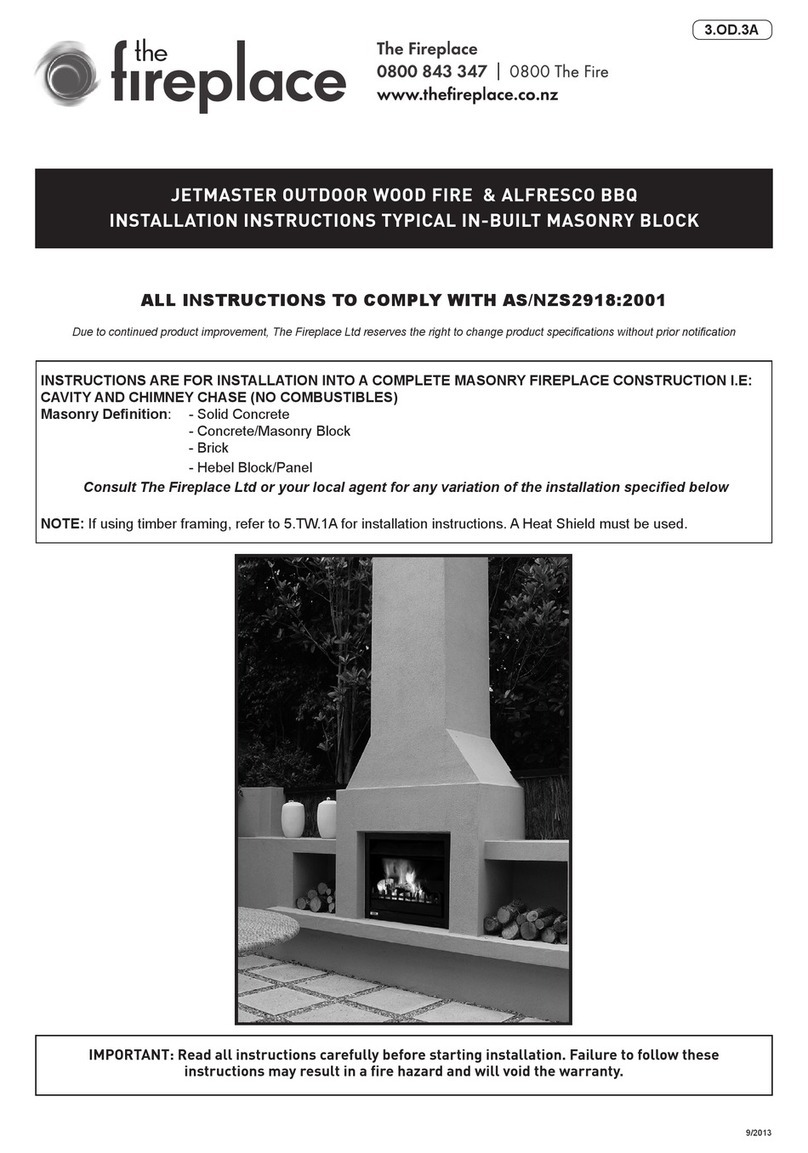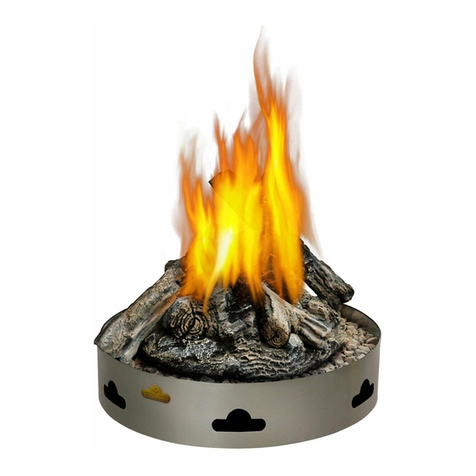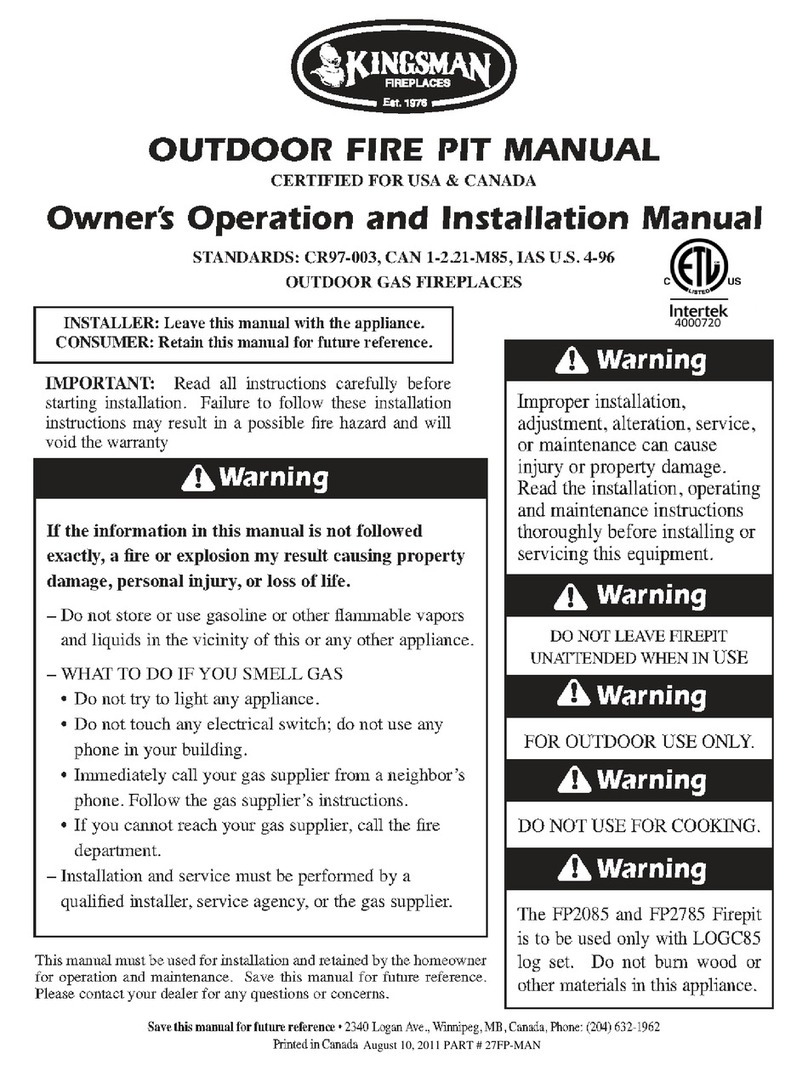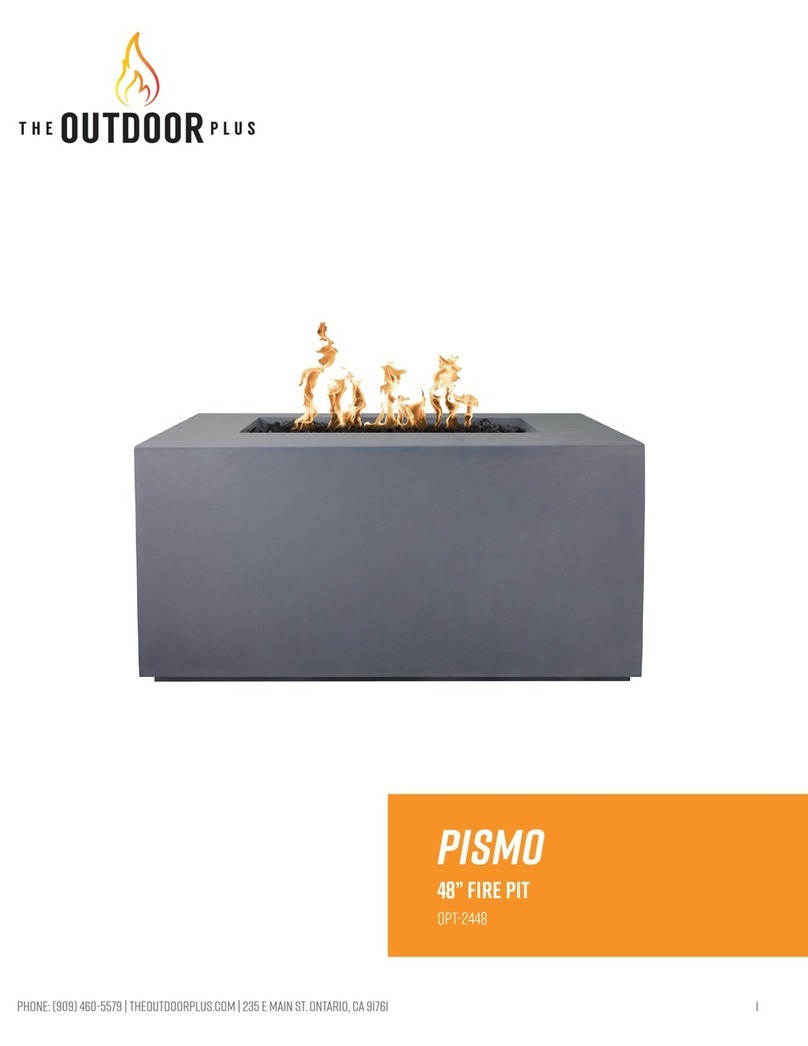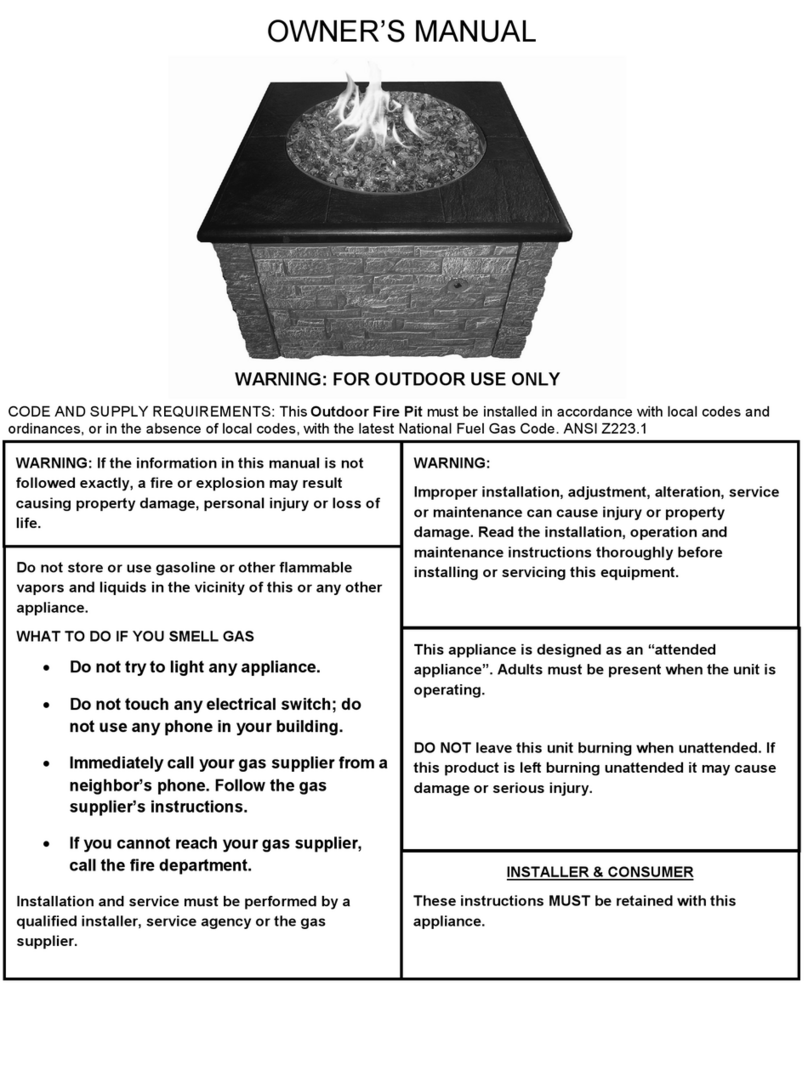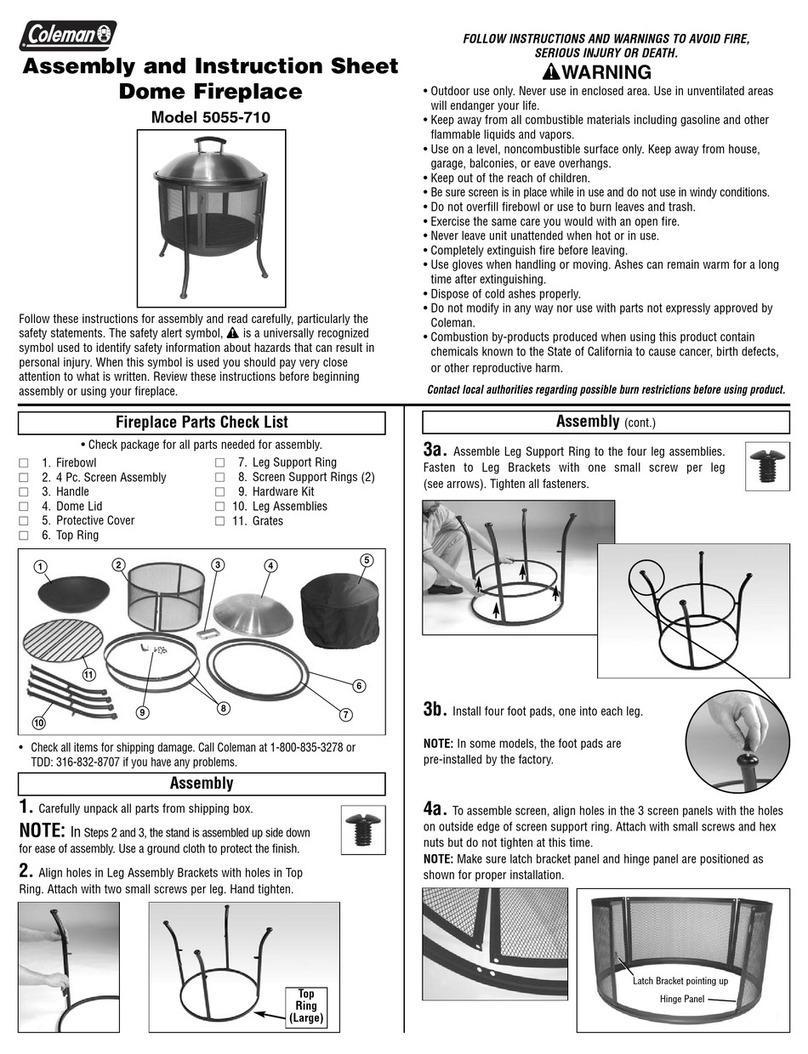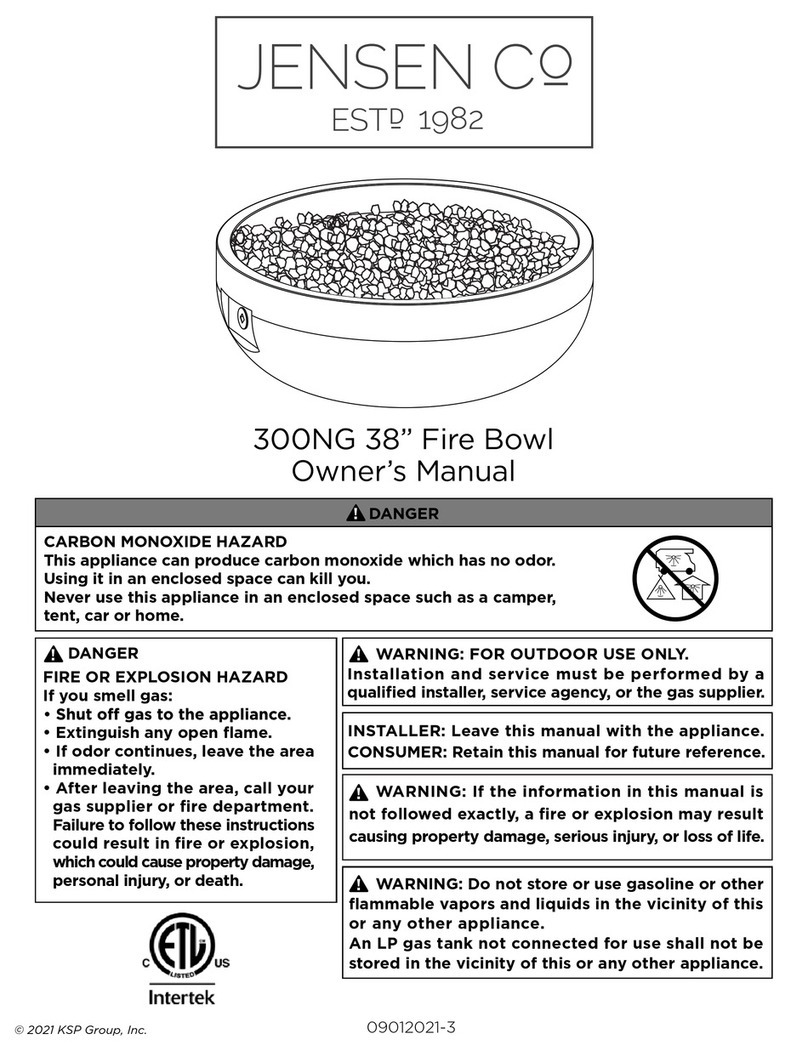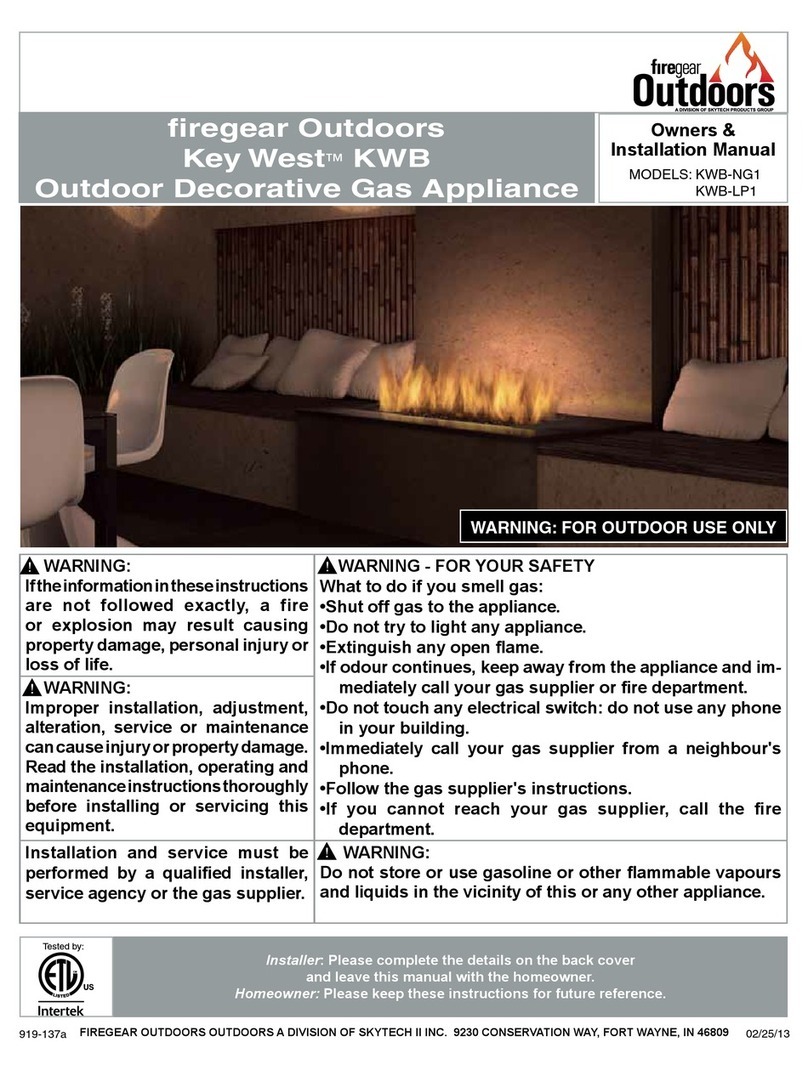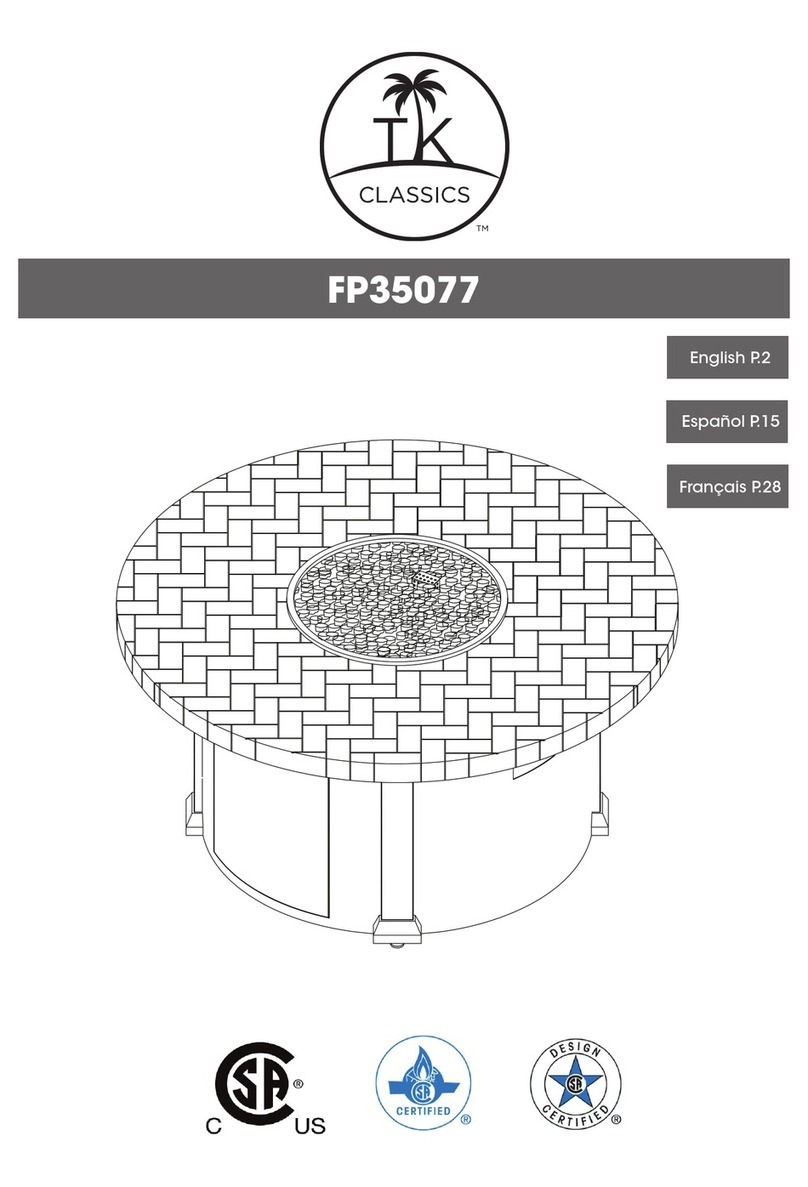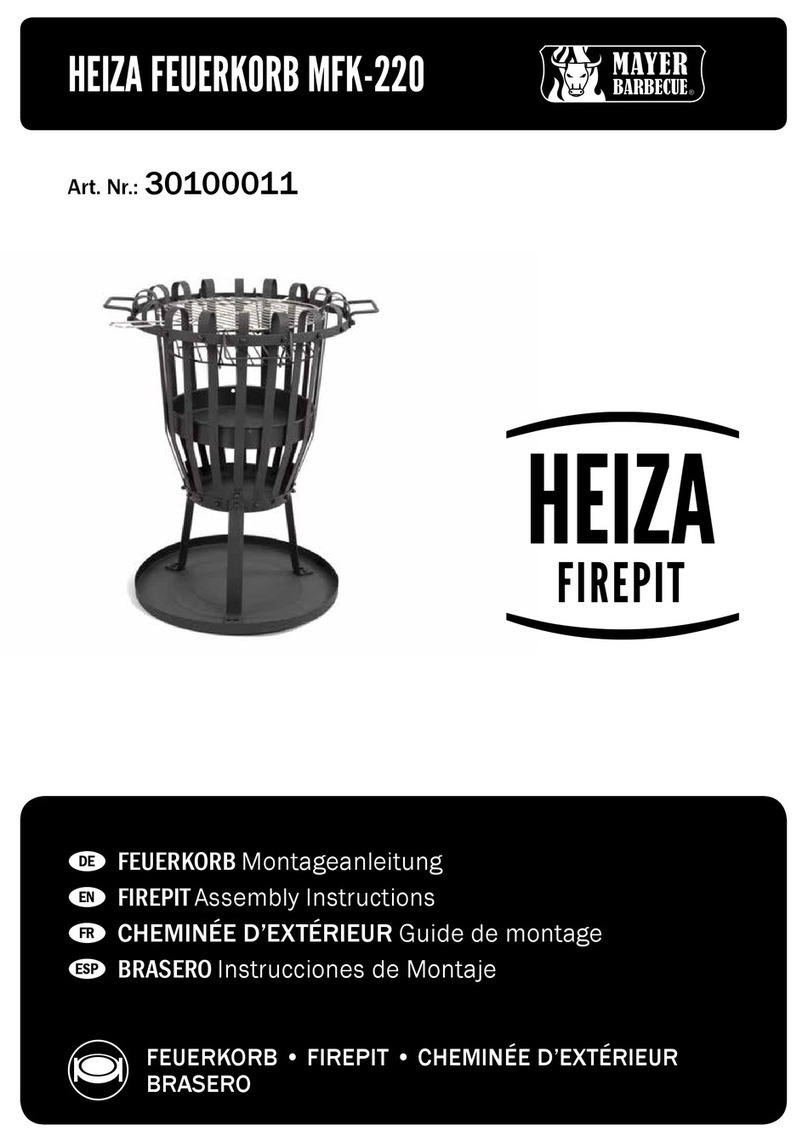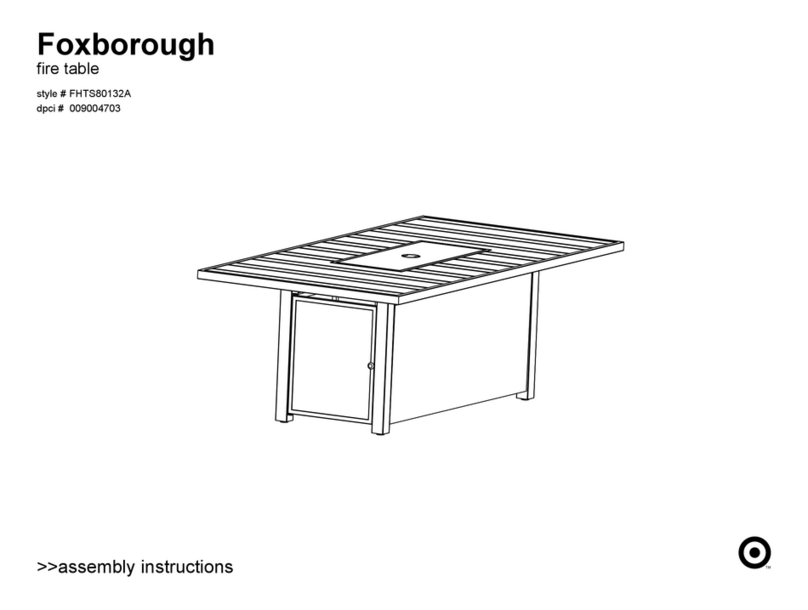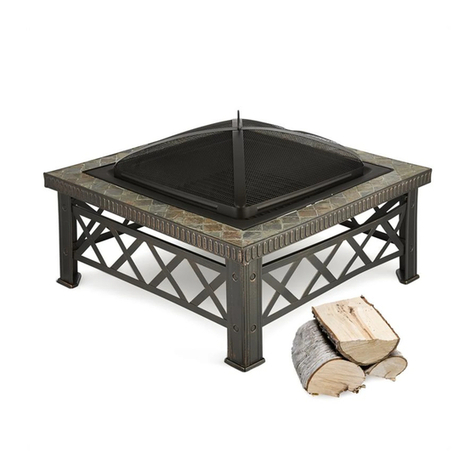
3
DANGER • FLAMMABLE GAS UNDER PRESSURE.
LEAKING LP-GAS MAY CAUSE A FIRE OR EXPLOSION IF IGNITED
CAUSING PROPERTY DAMAGE, BODILY INJURY OR DEATH.
CONTACT LP GAS SUPPLIER FOR REPAIRS OR DISPOSAL OF THIS
CYLINDER OR UNUSED LP-GAS.
WARNING • FOR OUTDOOR USE ONLY.
DO NOT USE OR STORE CYLINDER IN A BUILDING,
GARAGE OR ENCLOSED AREA.
DO NOT REMOVE, DEFACE OR OBLITERATE THIS LABEL
EXCEPT AS AUTHORIZED BY ANSI/NFPA 58.
DANGER. Do not store a spare LP cylinder under or near a barbecue grill or other heat sources.
NEVER fill an LP cylinder beyond 80% full: a fire causing property damage, serious injury or death may occur.
WARNING:
•Know the odor of LP-gas. If you hear, see or
smell leaking LP-gas, immediately move everyone
away from the cylinder and call the Fire Department.
Do not attempt repairs.
•Caution your LP-gas supplier to:
- Be certain cylinder is purged of trapped
air prior to first filling.
- Be certain not to over fill the cylinder.
- Be certain cylinder requalification date
is checked.
•LP-gas is heavier than air and may settle in low
places while dissipating.
•Contact with the liquid contents of cylinder
will cause freeze burns to the skin.
•Do not allow children to tamper or play with
cylinder.
•When not connected for use, keep cylinder
valve turned off. Self contained appliances
shall be limited to a cylinder of 30 lb capacity
or less.
•Do not use, store or transport cylinder where
it would be exposed to high temperatures.
Relief valve may open allowing a large amount
of flammable gas to escape.
•When transporting, keep cylinder secured in
an upright position with cylinder valve turned
off.
WHEN CONNECTING FOR USE:
•Use only in compliance with applicable codes.
•Read and follow manufacturer’s instructions.
•Consult manufacturer’s instructions concerning
the cylinder connection provided with your
appliance.
•Be sure regulator vent is not pointing up.
•Turn off all valves on the appliance.
•Do not check for gas leaks with a match or open
flame. Apply soapy water at areas marked “X”.
Open cylinder valve. If bubble appears, close
valve and have LP-gas service person make
needed repairs. Also, check appliance valves
and connections to make sure they do not leak
before lighting appliance.
•Light appliance(s) following manufacturer’s
instructions.
•When appliance is not in use, keep the cylinder
valve closed.
Cylinder valve hand wheel
Point of connection
Liquid level indicator
(optional)
Pressure relief valve
Cylinder
!
!
!
!
